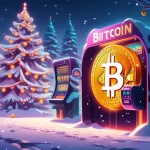Solana and Ethereum Surge, But Is Little Pepe Meme Coin a Miracle or Mirage?

Solana and Ethereum Power Ahead, But Is Little Pepe a Meme Coin Miracle or Just Smoke and Mirrors?
Bitcoin remains the gold standard of crypto, but the blockchain arena is buzzing with contenders vying for attention. Solana (SOL) and Ethereum (ETH) are delivering consistent growth and cutting-edge upgrades, while a newcomer, Little Pepe (LILPEPE), is turning heads with bold claims of transforming a mere $700 investment into a jaw-dropping $70,000 by 2026. Is this meme coin the next big thing, or just another flash in the pan?
- Solana (SOL): Record Total Value Locked (TVL) and unmatched transaction speed.
- Ethereum (ETH): Price surges near $4,800 with game-changing upgrades looming.
- Little Pepe (LILPEPE): Meme coin hype promises 35x returns—genius or gamble?
We’re diving deep into what makes Solana and Ethereum pillars of the crypto revolution, while throwing a harsh spotlight on Little Pepe’s lofty promises. Here at Let’s Talk, Bitcoin, we’re all about pushing decentralization and disrupting outdated systems, but we’ve got no time for nonsense or shady hype. Let’s break down the facts, the potential, and the pitfalls in this chaotic corner of the crypto world.
Solana Blockchain: Speed, Scale, and a Few Stumbles
Solana’s Record TVL and Speed in 2025
Solana has carved out a reputation as a formidable rival to Ethereum, especially in raw transaction volume. Its lightning-fast processing and rock-bottom fees make it a darling for decentralized finance (DeFi) and decentralized applications (dApps). For those new to the space, DeFi refers to blockchain-based financial systems that bypass traditional intermediaries like banks, while dApps are programs running on decentralized networks—think of them as apps that don’t answer to Big Tech overlords.
As of late August 2025, Solana smashed a new record with a Total Value Locked (TVL) of $12 billion. TVL measures the total assets staked or locked in a blockchain’s DeFi protocols, reflecting user trust and adoption. Add to that institutional backing from Nasdaq-listed Safety Shot, and you’ve got a platform with serious credibility. Upcoming network upgrades like Alpenglow and Firedancer are poised to boost scalability even further—imagine upgrading a narrow road to a sprawling highway, ready to handle a flood of traffic. Solana’s raw efficiency makes it a poster child for effective accelerationism, the idea of speeding up tech progress to challenge centralized power structures.
Solana’s Network Challenges
But let’s not paint it as flawless. Solana has a history of network outages, particularly in 2021 and 2022, when transaction overloads brought the system to a grinding halt. These hiccups frustrated users and raised questions about reliability. While the team behind Firedancer—a new validator client designed to prevent such failures—claims it will solve these issues, the proof is in the pudding. The crypto community has been vocal, with some developers praising Solana’s ambition and others warning that pushing speed over stability could backfire. For now, Solana remains a high-potential play, but with scars that remind us even the fastest blockchain can trip.
Ethereum: The DeFi Giant Still Dominates
Ethereum’s Price Momentum and Upgrades
Ethereum continues to be the bedrock of the smart contract ecosystem. If you’re just getting started, smart contracts are automated agreements coded on the blockchain—think of them as digital vending machines that execute deals without a middleman. ETH’s price has been climbing, recently hitting around $4,600 and peaking near $4,800 in a single month as of late 2025. Market watchers are buzzing about a potential jump to $4,900 if it breaks past a key resistance level around $4,500, where selling pressure often kicks in.
What’s driving this? Beyond market momentum, the upcoming Fusaka hard fork in November 2025 is set to enhance speed and decentralization. A hard fork is a major protocol update that can alter how a blockchain functions, sometimes sparking debate or even network splits if consensus isn’t reached. Fusaka aims to make Ethereum more efficient and less dependent on centralized choke points, a move that resonates with our push for privacy and freedom. Layer 2 solutions—secondary networks like Arbitrum and Optimism built atop Ethereum—further cut transaction costs and delays, reinforcing ETH’s grip on DeFi.
The Gas Fee Problem and Layer 2 Solutions
Yet, Ethereum isn’t without flaws. High gas fees—the cost to process transactions—remain a pain point, especially during network congestion. For example, minting a simple NFT (a unique digital asset) can set you back $50 to $100 at peak times, pricing out smaller players. Layer 2 networks aim to fix this by offloading transactions from the main chain, slashing fees dramatically. Adoption of these solutions is growing, with Arbitrum alone handling millions of transactions monthly. But skeptics argue it’s a Band-Aid, not a cure—Ethereum’s base layer still struggles under heavy load, and not all dApps seamlessly integrate with Layer 2. Despite the challenges, with a market cap towering over most altcoins, Ethereum offers a stability that wildcards can’t match.
Little Pepe Meme Coin: Hype Machine or Total Bust?
Little Pepe’s Presale Frenzy
Now, let’s tackle the oddball in the mix. Little Pepe (LILPEPE) is the latest meme coin grabbing headlines, sitting at $0.0022 per token in stage 13 of its presale, with a small uptick expected in stage 14. For the uninitiated, meme coins are cryptocurrencies often born from internet humor or viral trends, usually lacking the deep utility of platforms like Solana or Ethereum. Think Dogecoin or Shiba Inu—tokens that soared purely on community excitement.
LILPEPE’s early stats are hard to ignore. It’s raised over $25 million, sold nearly 16 billion tokens, and built a following of 41,000 holders. Marketing stunts like a $777K prize draw and a 15 ETH giveaway are fueling visibility, while a listing on CoinMarketCap adds a layer of exposure. A security audit by Certik—a top blockchain security firm—gave it a 95% score, which is a rare positive for a meme coin. The pitch? A staggering 35x growth by 2026, potentially turning a $700 investment into $70,000, as highlighted in discussions around Solana and Ethereum’s steady growth contrasted with speculative tokens. The team even claims Layer 2-like speed comparable to Polygon, an Ethereum scaling solution, but offers zero hard evidence. Frankly, this reeks of straight-up marketing nonsense—let’s not pretend otherwise.
Risks of Meme Coin Mania
Let’s play devil’s advocate for a moment. Meme coins can be a riot, and some early Dogecoin or Shiba Inu buyers struck gold during bull runs. Community-driven frenzy can onboard retail investors, showing the power of decentralized, grassroots momentum—something that aligns with disrupting stodgy financial gatekeepers. But here’s the brutal truth: most meme coins implode, leaving latecomers with nothing. LILPEPE shows no sign of real-world utility—no DeFi, no dApps, just cute branding and empty promises. Even with a strong Certik score, that doesn’t shield against market manipulation or classic pump-and-dump schemes, which infest this niche. Unlike Dogecoin, which gained limited traction as a payment method, LILPEPE offers no hint of evolving beyond a speculative bubble. If you’re jumping in, treat it as a carnival game—fun until the lights go out.
Bitcoin’s Lens: Why Maximalists Might Roll Their Eyes
As Bitcoin enthusiasts, we can’t help but view this landscape through a maximalist tint. Bitcoin’s beauty lies in its simplicity—pure decentralization, unmatched security, and a true store of value. Solana’s speed and Ethereum’s smart contracts fill vital roles BTC doesn’t aim to, driving innovation in niches like DeFi and scalable transactions. But meme coins like LILPEPE? They’re often a sideshow, distracting from crypto’s core mission of financial sovereignty. Sure, they might democratize access by pulling in newbies with cheap entry points, but they also taint the space with gambling vibes over genuine disruption. Bitcoin remains the unshakeable foundation—Solana and Ethereum build on it, while tokens like LILPEPE risk turning the revolution into a circus.
2025 Market Climate: Bull Run or Bubble?
Zooming out, the crypto market in 2025 seems to be riding a wave of optimism. Solana’s record TVL and Ethereum’s price climb suggest a maturing space with institutional interest—big players are betting on blockchain’s future. Yet, this same environment fuels meme coin mania, as retail investors chase quick riches amid bull run hype. Little Pepe’s presale success mirrors past cycles, like 2021’s meme coin explosion, where social media buzz drove unsustainable spikes. Regulatory scrutiny looms larger now, with bodies like the SEC potentially cracking down on tokens resembling unregistered securities—meme coins are prime targets. Meanwhile, Solana and Ethereum, with established ecosystems, are better positioned to weather legal storms. This split between grounded innovation and reckless speculation defines the current crypto pulse, and navigating it demands sharp skepticism.
Key Questions and Takeaways
- Why are Solana and Ethereum seen as reliable crypto investments?
Solana’s $12 billion TVL, rapid transactions, and backing from firms like Safety Shot highlight its strength, while Ethereum’s price near $4,600 and the Fusaka hard fork underscore its DeFi leadership and ongoing improvements. - What makes Little Pepe (LILPEPE) an attractive bet for some?
Its presale haul of over $25 million, a community of 41,000 holders, and a projected 35x growth by 2026 lure risk-hungry investors dreaming of massive returns. - How realistic is turning $700 into $70,000 with Little Pepe?
The 35x forecast echoes Shiba Inu’s 300x surge in 2021, but it’s a wild gamble reliant on fleeting hype, not tangible value or utility. - What are the dangers of meme coin investments like Little Pepe?
Despite a 95% Certik security rating, meme coins often lack purpose and are vulnerable to crashes, manipulation, and pump-and-dump traps, unlike proven platforms like Solana or Ethereum. - How do Solana and Ethereum advance the vision of decentralized finance?
Solana’s scalability and low fees enable accessible DeFi tools, while Ethereum’s smart contracts and Layer 2 networks power a vast ecosystem of apps, both eroding centralized financial control.
Solana and Ethereum are forging ahead, crafting the infrastructure for a decentralized future we’re passionate about—one where privacy, freedom, and innovation reign. They’ve got their flaws, but they’re laying bricks for the financial revolution. Little Pepe, though? It’s a dart throw in the dark—a speculative stunt that could dazzle or devastate. If you’re tempted, play it with pocket change, not your life savings. The crypto space is a battleground of brilliance and bunk; stick with us at Let’s Talk, Bitcoin as we cut through the clutter to spotlight what truly drives this unstoppable shift.



